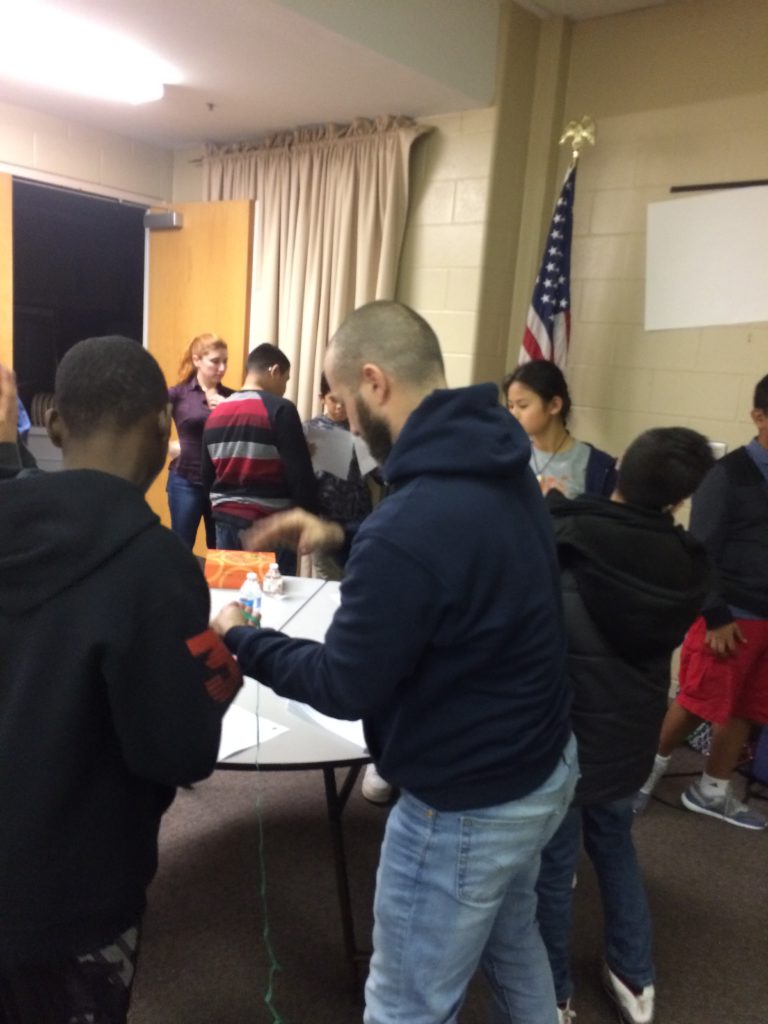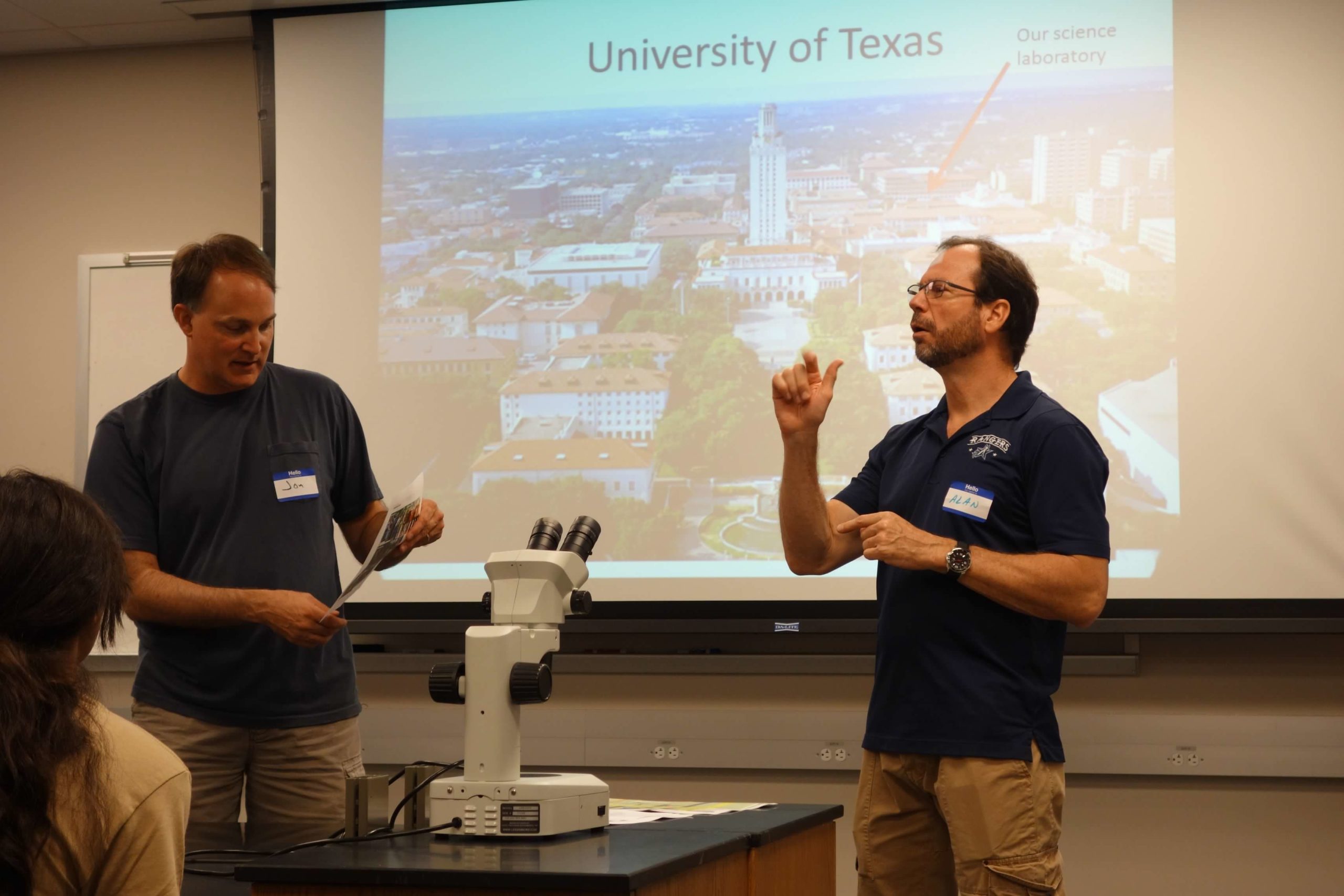“Tips and Tales” provides some strategies and insights to consider when initiating efforts for an outreach event or professional development. Checklists included provide examples of what to consider when planning.
Value of Ongoing Training

Practically speaking, frequent training is provided to meet continuing education requirements for certification or licensure within a profession.
However, we often see educators, for example, who are in search of new and successful strategies for working with populations they may not be as familiar with serving or want information on current trends within the field.
They often emphasize the value of coming together for a shared training where ideas can be exchanged and networking can occur.
Parents and community professionals share those same desires – to support students in the best way possible and to have an understanding of successful ways to provide that support.
Students, on the other hand, benefit significantly from participating in unique and exciting experiential events where there is exposure to adult trainers who look like them and who share an excitement for the topics of the event.
Learning and talking and networking with young peers can provide opportunities that have a lifelong impact and can generate an interest, perhaps a love for the content, leading students toward life and vocational goals in adulthood.
Adult vs Young Learner
Adults will attend with an idea of what their expectations of outcomes for the training will be upon completion.
Adult learners generally attend training or an event because they are required or mandated to attend because it is a topic of specific interest to them; the topic pertains to their work or potential work responsibilities, or it provides them with the CEU’s or training credit they need to maintain or obtain certain licensure or certification.
They will expect the trainers to come well prepared and knowledgeable about the subject matter.
Adults expect to be interacted with as equal partners in the teaching/learning process and be respected as an adult. There is no place for condescending or paternalistic approaches to teaching adults. It is crucial that a trainer checks in frequently with his/her audience of adult learners to be sure everyone is on board, following, and engaging.
Younger learners, of course, require more direction, assistance, and hands on instruction. Active and experiential learning is essential for student engagement.
With younger learners, utilization of different teaching methods incorporating appropriate visuals, examples, activities, discussion, and explanations of how the information will apply now as well as in the future helps them appreciate the relevance.
The use of peer instructors and individuals who share the students’ life experiences will enhance the experience and students tend to respond favorably to these strategies.
Learning Venue
Learning can occur in a wide array of settings. In current times, online learning has become more the norm than the exception. While it can be very effective, there are also challenges to consider.
Questions to Ask:
– The length of time students and even adults can sit in front of a screen must be considered.
– How will you keep people engaged?
– What are the motivators for remaining participative?
– Are there access issues that must be addressed?
Strategies can be implemented that ensure participation, active learning, and/or “buy in” for the class, program, or project. Of course, there are many online options in terms of software and apps, such as zoom, facetime, bluejeans, google meet, etc. A significant benefit to online training is its’ availability to those who may be unable to physically attend on site.
Consideration should be given, however, to the nature of what will be taught and how the number of participants may impact effectiveness. In some cases, less is better, especially when working with younger learners.
As a result, training can be provided statewide or even nationwide, including hundreds of participants. However, face to face or on-site venues are often the optimum approaches to instruction.
While it may limit the number of participants due to facility space, students’ ability to travel, travel costs, etc, there is a great deal to be said about the benefit of being able to interact in real-time. It allows trainers/instructors the ability to read the audience, respond to group and individual needs, encourage more interaction among participants, and allow for more immediate adjustments when needed to accommodate learners. It may enable instructors to plan for more interactive activities, enhance discussions and allow for more opportunities for participants to benefit from and learn from others in the room.
In addition, while accommodations such as captioning and interpreters can be provided online, more enhanced accommodations such as tactile interpreters and extended time to complete a task are very difficult to accommodate online when you are working with large groups while on-site events can be planned for such needs with relative ease.
Large and small venues/events are very similar as it relates to much of the planning and preparing for training. Many facets of planning such as accommodations, refreshments, etc apply to both types of events with adjustments to how many or how much.
Small Group Event
A few things to consider when planning for a small group are:
– Will small group discussions be feasible? Will pairings be more feasible?
– Does the content being taught require more participants to complete the task(an example might be that you cannot plan for competitive groups because you simply do not have enough people to divide them into groups to compete)?
– Is the event too costly due to the cost of materials, access services, etc to allow for a small number of learners?
Large Group Event
Some of the same concerns will apply when planning for large groups. A few issues that are particular to planning for larger numbers of participants are:
– If planning for group breakouts, how many interpreters, captionists, etc will be needed?
– Line of vision issues. If everyone is in one large room, will everyone be able to see what is going on AND receive information via interpreters, captioning, etc?
– Is there enough time allocated for training to allow for the level of participation wanted or must you consider less audience participation in order to cover all of the material AND is this a feasible solution given who your target audience will be for this event?
– Logistics of moving people from one room or site to another must be considered when time is of concern and there are large numbers of people to move. Have you built the time needed into the schedule?
– How will you check with the audience to ensure everyone is engaged?
– Will you need additional assistants or trainers in order to adequately meet training needs?
– What does the physical space look like and are there adjustments needed to work with the space?
Audience Participation and Engagement
As already mentioned numerous times, learner participation and engagement are essential to achieving a positive and successful learning experience.
Often, with smaller groups and events that are brief in time, it is easier to capture and maintain interest. The challenge is much greater, however, as the audience grows larger and the length of time is extended. Seasoned trainers know this and will plan accordingly.

Strategies to consider are:
– Begin training with a statement or action that reflects what the day will look like and come back to it in some way throughout the event.
– Use of appropriate humor is almost always a successful strategy and can be incorporated no matter the age range of the audience.
– Use of personal stories or vignettes that provide examples of concepts being taught can be powerful and interesting to the learner.

More Strategies:
– Mix it up! Use visuals, explanations and descriptors, hands on activities, discussions, brainstorming sessions, and exchange of ideas and examples to appeal to a range of learning styles of the audience participants. Add good pacing throughout the day and adequate breaks as well.
– Check in with the audience frequently to be sure you are meeting their needs, that questions are being responded to, communication is working well and everyone is up to speed with what is happening in the room.
– Use of speaker panels comprised of students, parents, employers, or others is often a great way to engage the audience while providing a range of ideas and perspectives.
There are those who implement strategies to maintain interest or the attention of participants through intimidation and other strategies that cause participant stress. Examples that we do not believe are effective or recommended and are definitely not well-received are:
- Ask for volunteers and then threaten to call on people even if they do not want to participate. This applies most especially to adult learners. Instead, have a plan for other ways to encourage volunteers such as door prizes, praise, recognition, etc.
- Tell them there will be a quiz at the end to see if they paid attention. Unless there is a grade involved or other reason for quizzing participants, there are better ways to encourage participation rather than the fear of quizzing or testing.
- Tell the audience you will be calling on them at random or unexpected moments to see if they are paying attention. Again, these are strategies that add stress and discomfort to the participants’ learning experience and can potentially cause embarrassment. Always a discouraged practice.
- Speaking in a condescending or paternalistic manner will never be well received nor does it shed a positive light on the presenter/teacher.
Identifying Trainers/Educators
It goes without saying that when selecting individuals to provide training for an event, you want to provide the best and most talented individuals possible. If you are cultivating training opportunities in your region, you want to cultivate trust and belief that you will deliver the optimum service through trainers and educators who have a strong knowledge base and experience related to the content/information being taught.
This often means making clear your expectations for a very high standard of professionalism, knowledge, and experience. Equally important is the ability of a trainer or educator to present the material. There are many wonderful classroom teachers who are not comfortable or proficient as professional speakers, for example, at an adult learner conference.
Your credibility as the coordinator and facilitator of training as well as the credibility of the trainers is built upon the degree to which your level of expectations and standards are known.
Strategies for ensuring you have highly qualified trainers are:
– Seek references from other professionals who have strong credentials themselves and you know you can trust them.
– Look for opportunities to observe individuals when they are presenting, teaching, or facilitating learning events in other places prior to approaching them about working for you.
– Consider teaming a less experienced trainer with someone who has strong skills a few times before expecting them to go it alone.
– Always be there to assist, back up, and support your trainers.
– Obtain well crafted resumes, bios, and other pertinent information on potential speakers and maintain a folder with the information so you do not have to ask for this from them every time they provide training.
– Recognize that you get what you pay for. In other words, be open to negotiating fees and costs and pay trainers as well as you can to both show appreciation for their hard work and to serve as an incentive for them to do training for you again in the future.
– Value experience. For example, just because someone has the content knowledge of a subject does not mean they can relate to participants if they have not actually done the job. Look for teachers with expertise in STEM content who actually have experience teaching, to provide training to STEM teachers. “Street cred” comes naturally when the trainer can both “talk and walk” the topic.


